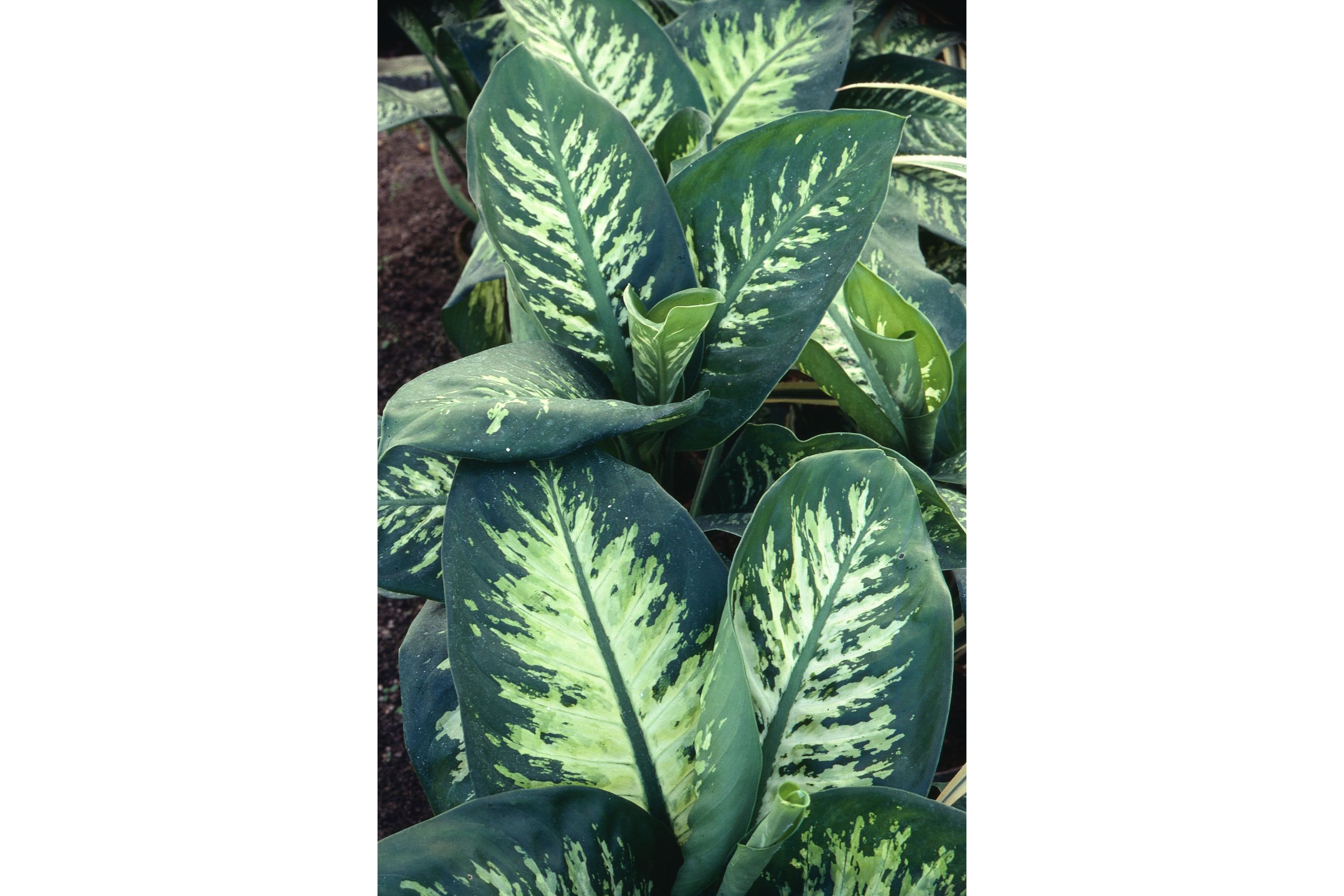Dumb Cane 'Camille'
(Dieffenbachia camilla)

Description
Dieffenbachia camilla is a popular houseplant known for its attractive foliage and ease of care. This plant, also known as Dumb Cane, belongs to the Araceae family and is native to tropical regions of Central and South America. In this article, we will delve into the various aspects of Dieffenbachia camilla, including its taxonomy, appearance, growth habits, care requirements, propagation, and common problems. Taxonomy Dieffenbachia camilla is a member of the genus Dieffenbachia, which consists of about 30 to 50 species of tropical plants. The genus is named after Ernst Dieffenbach, a German physician who was also a naturalist and explorer. The specific epithet "camilla" is a Latin word that means "young, virginal girl" and is possibly a reference to the plant's young leaves, which are lighter in color and have a softer texture than mature leaves. Appearance Dieffenbachia camilla has large, glossy leaves that are oblong to elliptical in shape and can grow up to 10 inches long and 5 inches wide. The leaves are usually green with white or cream-colored variegation. The variegation patterns can vary from plant to plant, with some having more white than others. The plant has a stem that is usually brown or green, and it can grow up to 3 feet tall. Growth Habits Dieffenbachia camilla is a relatively slow-growing plant, but it can reach a mature size of about 3 feet tall and wide if given the right conditions. The plant is a tropical species and prefers warm, humid environments. It can be grown indoors or outdoors, depending on the climate. Care Requirements Dieffenbachia camilla is a low-maintenance plant that is easy to care for, making it a great choice for beginners. Here are some tips on how to care for this plant: Light: Dieffenbachia camilla prefers bright, indirect light, but it can also tolerate low light conditions. Avoid direct sunlight, as it can scorch the leaves. Water: Water the plant when the top inch of soil is dry to the touch. Make sure to avoid overwatering, as this can cause root rot. Humidity: Dieffenbachia camilla prefers high humidity levels. You can increase the humidity around the plant by placing a tray of water nearby or by using a humidifier. Temperature: The plant prefers temperatures between 60 and 75 degrees Fahrenheit. Avoid placing it near drafts or in areas with extreme temperatures. Fertilizer: You can fertilize Dieffenbachia camilla once a month during the growing season (spring and summer) with a balanced fertilizer. Propagation Dieffenbachia camilla can be propagated through stem cuttings or division. Here's how: Stem cuttings: Cut a stem from the parent plant that is at least 6 inches long and has a few leaves attached. Dip the cut end in rooting hormone and plant it in a pot filled with moist potting soil. Keep the soil moist and place the pot in a bright, indirect light location. The cutting should root in a few weeks. Division: To divide the plant, remove it from its pot and gently separate the root ball into two or more sections. Plant each section in a separate pot with fresh potting soil. Common Problems Dieffenbachia camilla is a relatively pest-resistant plant, but it can be susceptible to a few common issues: Yellowing leaves: This can be caused by overwatering, underwatering, or exposure to direct sunlight. Brown spots on leaves: This can be a sign of fungal or bacterial leaf spot. Remove affected leaves and treat the plant with a fungicide.
Taxonomic tree:







